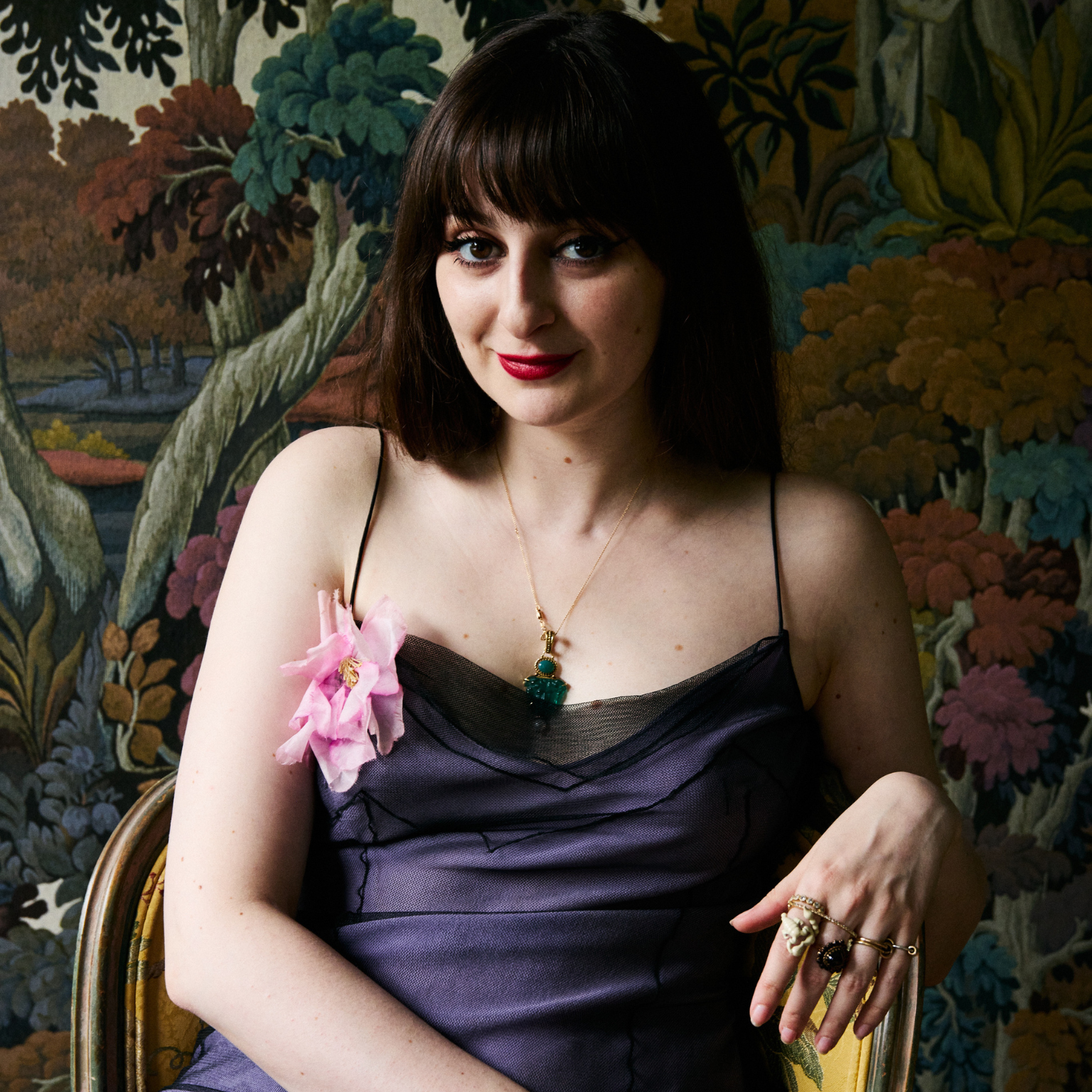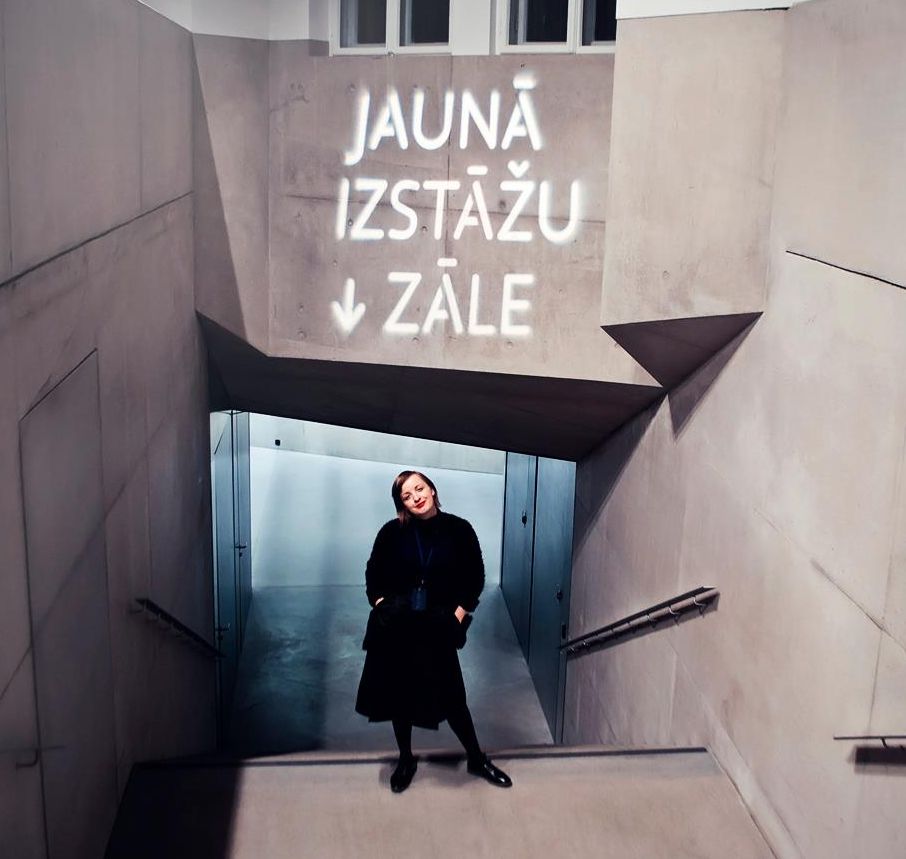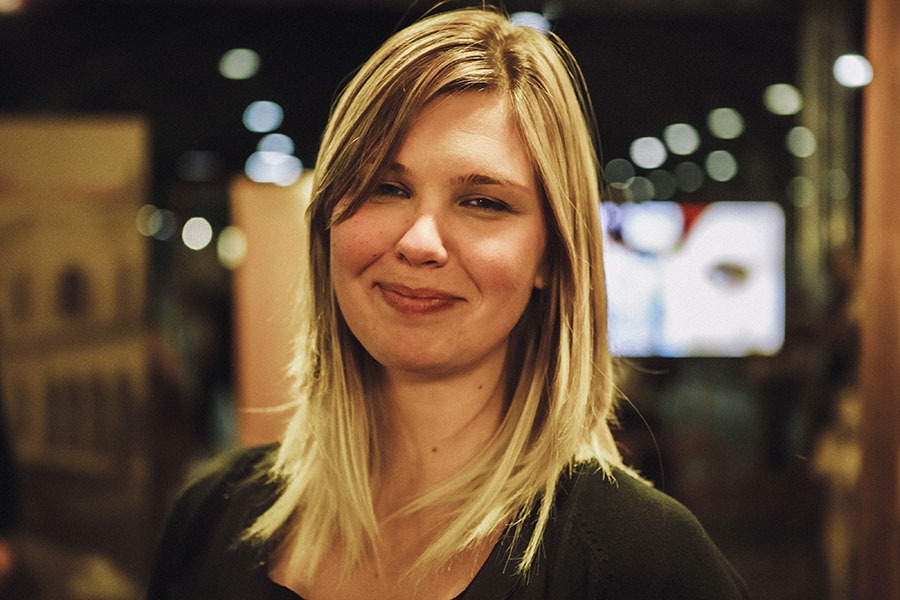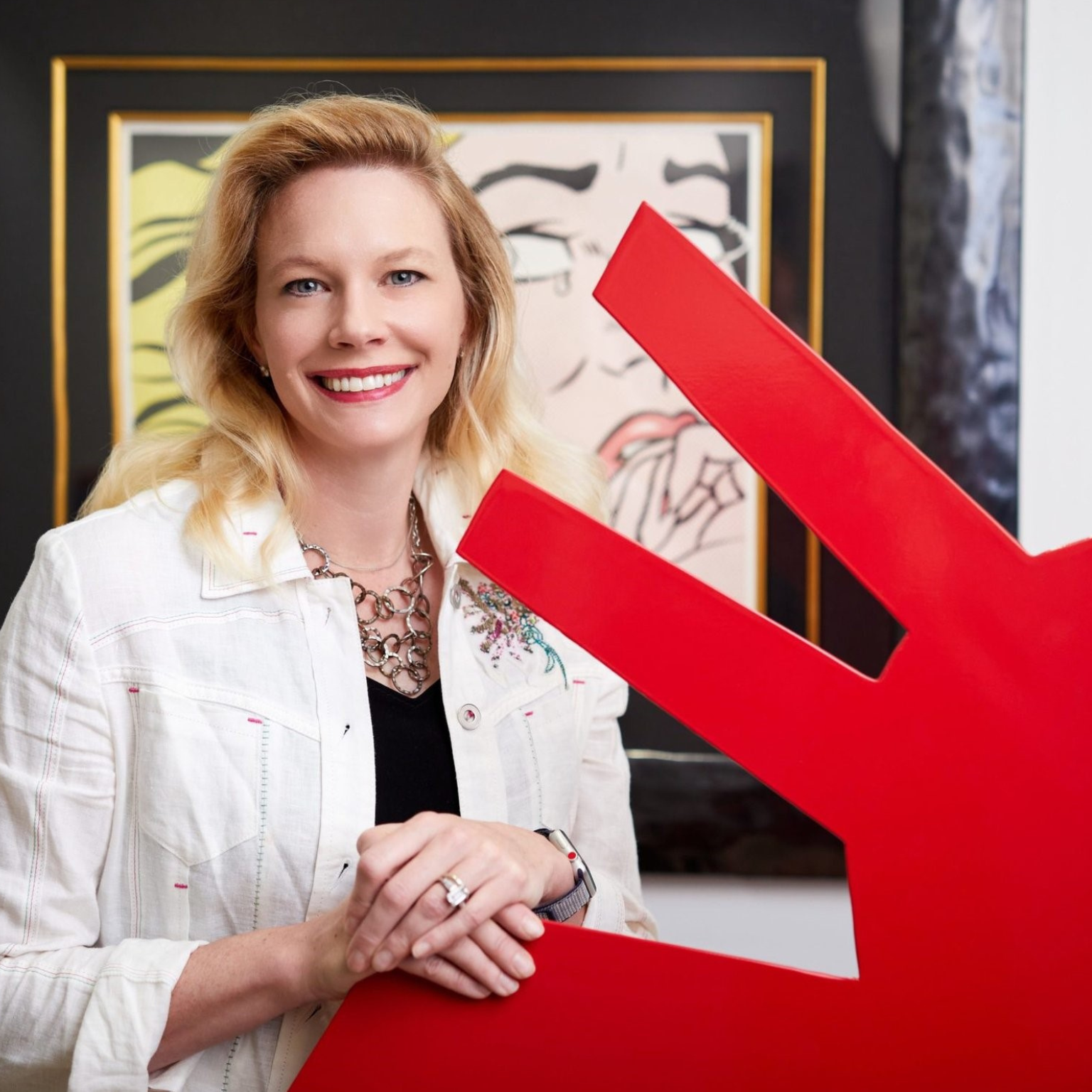Chloe Cassens, the representative of the Severin Wunderman Collection, Menton, France. Photo © Keenan Reed
Severin Wunderman (1938-2008) was an entrepreneurial visionary and creative genius who left an indelible mark on the world of business and philanthropy. Through his incredible capacity for innovation and his dedication to quality, he has shaped multiple industries, leaving behind a legacy that he continues to inspire and influence.
In this exclusive interview, we have the honor of speaking with Chloe Cassens the representative of the Severin Wunderman Collection in Menton, France, above all, she is Wunderman’s granddaughter.
She is a key figure in telling us about the intellectual legacy that her grandfather left us and also in presenting the ongoing project SACRED MONSTER which involves the figure of the French writer and playwright Jean Cocteau (1889-1963) of whom Wunderman was an obsessed collector.
Cassens shares with us not only his professional aspect but in her words, we can also feel his humanity and his philosophy of life. Through stories and anecdotes, we will discover the distinctive traits of this extraordinary leader, his successful strategies, and his lasting impact on the global business landscape as GUCCI Timepieces.

An immersion in the lives and thoughts of exceptional individuals like Severin Wunderman not only inspires us, but offers us valuable lessons on leadership, innovation, and determination in support of important causes, among others, such as the Holocaust.
Severin Wunderman was born in 1938 in Brussels, Belgium, shortly before the outbreak of World War II; due to Nazi anti-Semitic laws and the German occupation of Belgium, Wunderman’s family was forced into hiding to avoid persecution during the Holocaust.
His family was of Jewish origin, and this put them at risk of being persecuted by the Nazis. Wunderman is a survivor thanks to his father’s intuition because he entrusted him to a Catholic priest who hid him in a center for blind children in the Belgian countryside.
After the war, Severin Wunderman emigrated to the United States, where he began the entrepreneurial career that would lead him to become a leading figure in the business world. And so, through the eyes and memories of Chloe Cassens, we begin this journey into the life and work of Severin Wunderman as an opportunity to reflect on the power of vision and the importance of pursuing one’s dreams with passion and commitment.
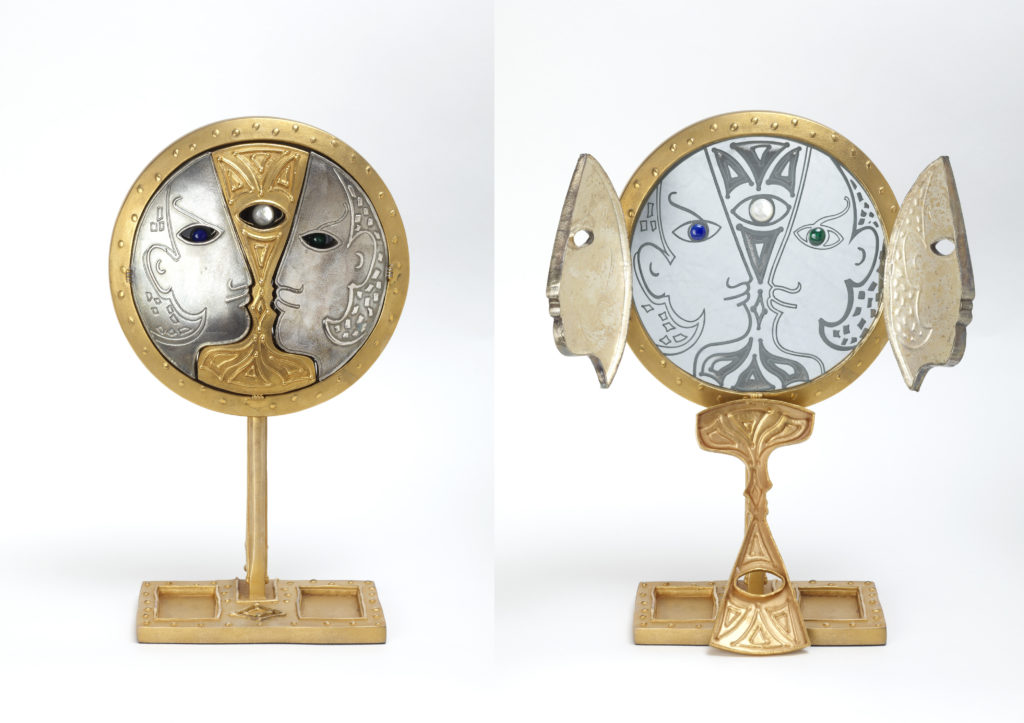
The SACRED MONSTER project was created in conjunction with the exhibition Jean Cocteau: The Juggler’s Revenge at the Peggy Guggenheim Collection in Venice, Italy, which opened its doors last April 13, until September 18, 2024.
What memories do you have of your grandfather Severin Wunderman? What relationship did you have?
I have many beautiful memories of my grandfather, and I cherish them all. I particularly loved days when he’d tell my mother that he was taking me to work with him instead of school; I’d shadow him around the Corum offices. Our relationship was a close one. I think I speak for all of my family members when I say that we all miss him dearly and think about him every day.
Wunderman was a Belgian-American entrepreneur and art collector, primarily known for his career in the watch industry and for amassing a vast collection of artworks and decorative art objects. Among the many artists like Picasso, Mirò, and Chagall, he also collected Jean Cocteau, considered a multifaceted and influential figure in 20th-century art and culture. Did he have a particular love for any of Cocteau’s works?
Yes! His obsession with art originated with his obsession with Cocteau. The first piece of art he bought was a Cocteau, which he got when he was 19 years old. The rest came over the course of his entire life. He never stopped collecting art, and he never deviated from one artist to another; all of his collection stemmed from Cocteau.
So, for instance, he had Picassos not because he was a huge fan of Picasso but because Picasso was a close friend of Cocteau’s.
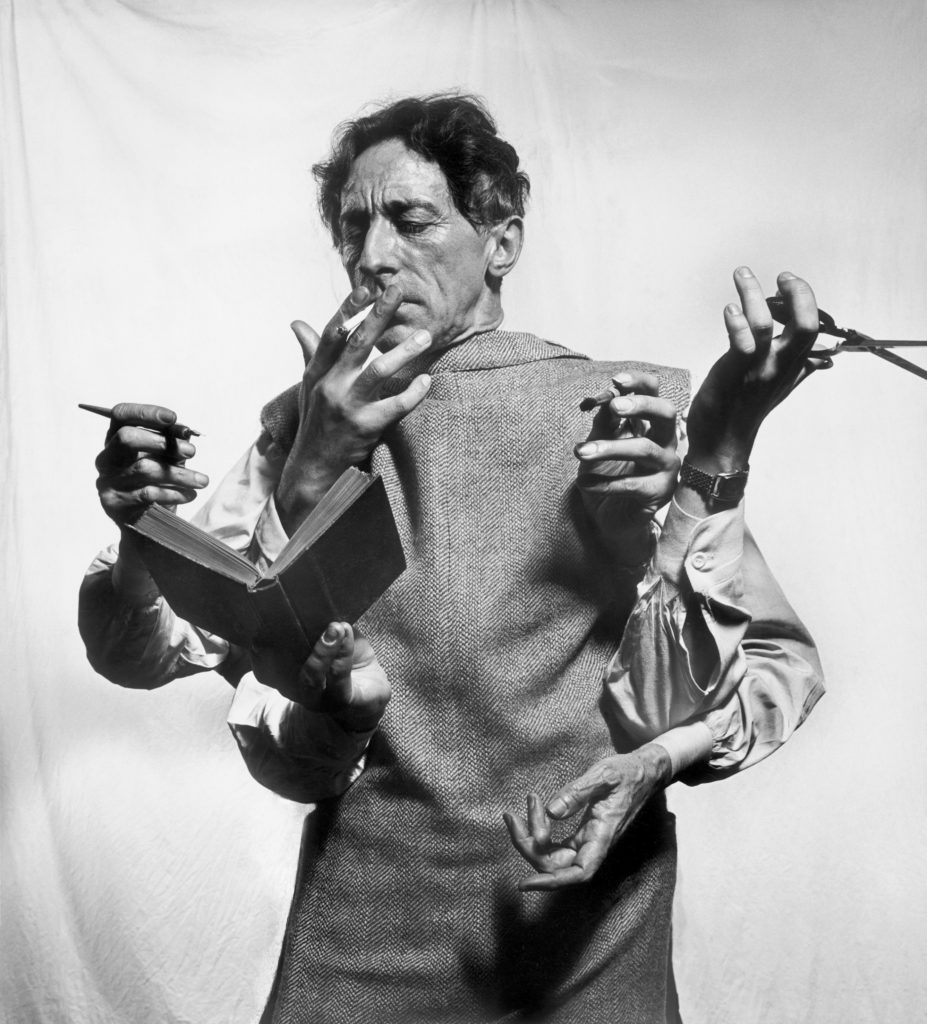
Severin Wunderman was a man who revolutionized the watch industry with GUCCI Timepieces, and among the causes he supported were Holocaust remembrance, medical research, and individual self-sufficiency. What value do these topics hold for you?
These topics are all extremely important to me. I feel like so much of the evils of the world, so much of the bad side of humanity that we see today and that has existed for history simply comes from lack of education, and self-sufficiency grows from education.
Be it the head of a family unit, religious organization, or government—keeping people from realizing their self-sufficiency and their individual power and keeping them uneducated are directly linked. “Knowledge is power” for a reason. On social media, we see so much disinformation, and conspiracy theories, and it exploded with the rise of COVID-19.
Social media also flattens the human experience and makes it easy for us to treat each other in increasingly impersonal ways. It breeds more of the dehumanization that intolerance and hatred for our fellow human beings come from. These causes that my grandfather supported only expand and grow in importance with each passing day.
As a representative of the Severin Wunderman Collection, you launched “Sacred Monster”, an educational project celebrating the legacy of Jean Cocteau. The Wunderman Collection is the largest in the world and also contributed to the establishment of the Musée Cocteau in France. Could you provide more details about this project and its specific objectives?
SACRED MONSTER is, always and foremost, a project of celebration and education around Jean Cocteau and the Severin Wunderman Collection. Presently, it’s a biweekly essay format that I release via Substack.

s.d. (1956 c.). Ink on paper, 22,5 x 15,5 cm. Private collection © Adagp/Comité Cocteau, Paris, by SIAE 2024

My objective is to make these subjects accessible to everyone because I believe that Cocteau and the Wunderman Collection is for everyone; it’s just about finding what aspect will suit each person’s unique interests.
Jean Cocteau is best known for his works in cinema, theater, and literature. As a director, he created iconic films such as “Beauty and the Beast” (1946) and “Orpheus” (1950), which have become classics of art cinema. What can you tell us about these two masterpieces? Are there any lesser-known anecdotes?
Beauty and the Beast and Orpheus are two of my favorite Cocteau works. They are both excellent entry points for people unfamiliar with Cocteau, who made a lot of art relating to and themed around myths and fairy tales.
Beauty and the Beast was the first film made of this story and was made in the last days of WWII, which I think is really remarkable. Disney drew a lot of inspiration from this film for their own, which came decades later.
Orpheus is the second part of a loose trilogy, the first being Le sang d’un poète (1932) and the third Le Testament d’Orphée (1960).

Cocteau was obsessed with the story of Orpheus and Eurydice, and he made a lot of art about it across several mediums. Jean Marais, Cocteau’s most well-known partner in romance and art, starred in both films. Some people may recognize a famous still of Marais in Orphée from the single cover art for the classic Smiths song, This Charming Man.
I like to say that Cocteau is either your icon’s icon or your icon’s icon’s icon… If you happen to be a fan of Morrissey, there’s your proof!
The launch of “Sacred Monster” coincides with the exhibition “Jean Cocteau: The Juggler’s Revenge” at the Peggy Guggenheim Collection in Venice, on display until September 18, 2024. How did the exhibition come about, and what type of collaboration is involved?
The exhibition came about when Karole Vail, the Director of the Peggy Guggenheim (and her granddaughter), contacted Cocteau expert Kenneth E. Silver to organize the exhibition. What Silver has curated is absolutely incredible and weaves Cocteau’s history with that of Venice and Guggenheim herself.
The exhibition features a large loan of works from the Wunderman Collection, the first of this size, and so I am here to help spread the word about it in every way that I can. I would love to see the first major exhibition of Cocteau’s work in almost 20 years be a huge success!

149,8 x 91 cm. Collection Nouveau Musée National de Monaco © Adagp/Comité Cocteau, Paris, by SIAE 2024

What are the priorities and future projects of the Severin Wunderman Collection?
I have many projects and ideas up my sleeve! My goal is to get to a point where, when I introduce myself, I no longer have to explain who Cocteau is or who Severin is. Not because I don’t enjoy doing so, but because I would love to see both of them gain more exposure to young people around the world.
Interview by Fabio Pariante: X • Instagram • Website
